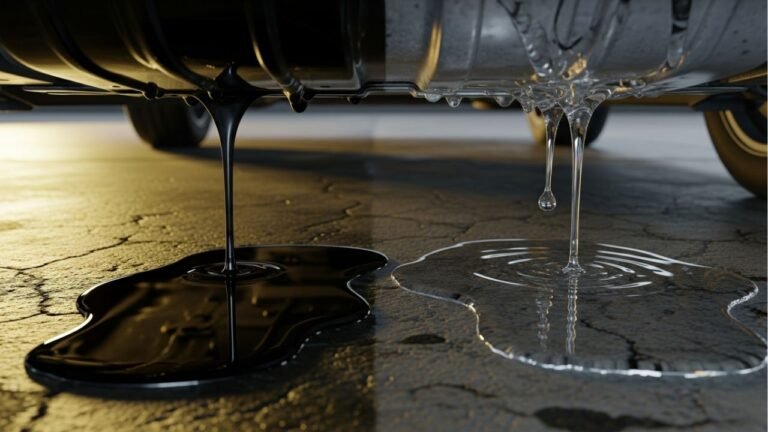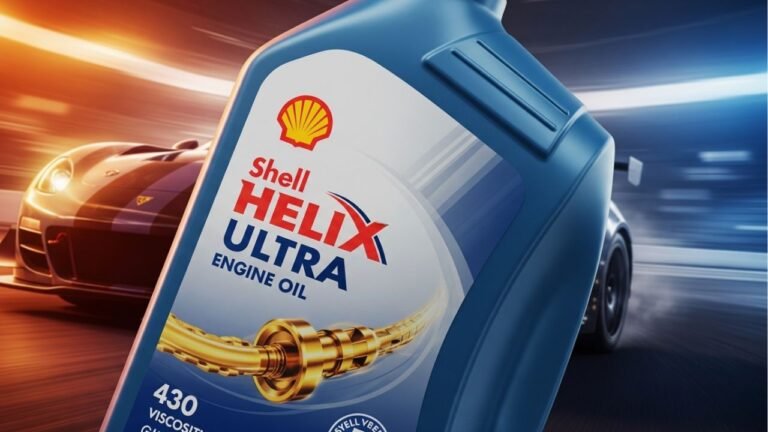Rust Protection Oil Spray for Cars

Let’s be real—if you’ve owned a car for more than a couple of years, you’ve probably worried about rust. It’s like that sneaky villain in a superhero movie—silent, slow, and devastating if you ignore it. Whether you park your car on the street, near the ocean, or even in a garage, rust doesn’t discriminate. And once it starts spreading, it’s hard to stop.
But here’s the good news: you don’t need to let rust win. One of the easiest, most affordable ways to fight back is using a rust protection oil spray for your car. It’s like giving your car a raincoat—simple, effective, and protective.
In this article, we’ll dive deep into how it works, why it matters, and how you can do it yourself. I’ll also share some personal tips, stories, and a few pitfalls to avoid—based on years of real-world experience (and a few rusty regrets).
What is a Rust Protection Oil Spray for Cars?

Unlike hard coatings or paints, this spray doesn’t dry hard. That may sound weird, but it’s actually a good thing. Since it stays fluid, it can creep into cracks, seams, and hidden areas—exactly where rust loves to hide.
There are different types, including:
Lanolin-based sprays (natural, sticky, long-lasting)
Petroleum-based sprays (penetrate better but may wash off)
Synthetic blends (designed for modern cars)
These sprays are safe on most car surfaces and can even stop existing rust from spreading further.
Think of it like putting Vaseline on your skin during winter—it creates a barrier and keeps you protected.
Why Rust is a Bigger Problem Than You Think
You might be thinking, “It’s just a little rust under the car—no big deal, right?” Sadly, no. Rust is a slow killer, and here’s why:
It weakens structural parts like the chassis, suspension, and brake lines
It reduces the resale value of your vehicle drastically
It spreads silently beneath paint and coatings
Repairs are often expensive once it starts
Rust doesn’t just make your car look old—it makes it unsafe. In countries with snow, salt on roads can eat through a car’s frame in just a few winters. Even in tropical areas like Bangladesh, high humidity can accelerate corrosion.
That’s where a rust protection oil spray for cars becomes more than a luxury—it’s a necessity.
How Rust Protection Oil Spray Works
So, how does this miracle in a can actually work?
Here’s the breakdown:
| Step | Action | Benefit |
|---|---|---|
| 1 | Spray onto metal | Creates a moisture barrier |
| 2 | Oil creeps into seams | Stops rust at microscopic level |
| 3 | Coats nuts and bolts | Prevents seizing and corrosion |
| 4 | Reapply every 6–12 months | Maintains long-term protection |
The spray gets into tight spots like door sills, wheel arches, inside fenders, and the undercarriage. Once applied, it blocks oxygen and water from coming into contact with the metal surface.
I remember the first time I tried it—it was on a 2004 Toyota Corolla. I was skeptical, but after a rainy season with no rust growth at all, I was sold.
Best Places to Apply Rust Protection Oil Spray

Undercarriage: This is the battle zone. Water, mud, salt—it all gets here.
Wheel Wells: Rocks and dirt chip paint here, exposing metal.
Door Bottoms and Hinges: Trapped moisture loves to settle in these.
Hood and Trunk Edges: Often overlooked, but highly exposed.
Fuel Tank Area: Moisture collects around mounting straps and seams.
Spraying these areas can make a huge difference in your car’s longevity.
DIY vs Professional Rust Protection: What’s Better?
You have two choices: do it yourself, or pay a shop. Let’s break it down.
DIY Rust Spray
Pros:
Cheaper (under $50 for good quality spray)
Can apply more often
You know exactly where it goes
Cons:
Messy
Time-consuming (about 2–3 hours)
May miss hidden areas without a lift
Professional Service
Pros:
Thorough and clean
Usually comes with a warranty
They reach places you can’t
Cons:
Expensive (can cost $150–$300)
Not all services are equal—some use inferior products
In my experience, if you enjoy working on your car, DIY rust protection oil spray is worth it. But if you don’t have the tools or time, getting it done professionally once a year is a smart investment.
Top Benefits of Using Rust Protection Oil Spray for Your Car
Let’s put all the technical stuff aside for a second. What do you really get out of using this spray?
Here’s a bullet list of real-life benefits:
Keeps your car younger for longer
Saves you money on rust repairs
Improves resale value
Protects parts from seizing and cracking
Peace of mind during rainy or snowy seasons
Reduces maintenance stress
I used to dread monsoon season. But now, with a fresh layer of rust protection oil spray on my car, I sleep better at night.
How Often Should You Apply Rust Protection Oil Spray?
One of the most common questions people ask is, “How often should I use it?”
The answer depends on a few things:
Climate: Humid or coastal areas? Twice a year.
Driving habits: Off-road or rural roads? Twice a year.
Garage kept? Once a year may be enough.
Ideally, apply it before rainy or winter seasons. Once you see your first signs of rust, use it immediately to slow the damage.
I usually spray mine in May and November—just before monsoon and just before winter.
Can Rust Protection Oil Spray Remove Existing Rust?
Short answer? No.
It’s not a rust remover—it’s a rust stopper.
If you already have visible rust, you’ll need to:
Sand or wire-brush the affected area
Clean it thoroughly
Use a rust converter (optional)
Then apply the oil spray to seal and protect
It won’t reverse rust, but it can stop it from spreading, which is still a big win.
Big Mistakes to Avoid When Using Rust Protection Oil Spray
Using rust protection oil spray for your car is simple, but there are a few common mistakes that can ruin your effort—or worse, damage parts.
1. Spraying Over Dirt and Moisture
Always clean and dry the area before spraying. Spraying over dirt locks in moisture and actually accelerates rust.
2. Ignoring Inner Panels
Most people spray the undercarriage and call it a day. But rust often starts inside panels. Use extension nozzles to reach into:
Doors
Rocker panels
Trunk lips
3. Using Too Little Spray
Don’t be shy. Use a generous amount, especially on high-risk areas. If it’s dripping slightly, that’s a good sign.
4. Forgetting Annual Re-application
One coat won’t last forever. Weather, road salt, and time wear it down. Put it on your calendar to reapply each year.
5. Spraying Onto Brake Rotors or Belts
Avoid spraying on moving parts like:
Brake rotors
Drive belts
Exhaust system
It can affect performance or create a fire hazard.
Best Rust Protection Oil Sprays You Can Buy
Here’s a quick comparison table of some of the most trusted products available:
| Brand/Product | Base | Notable Feature | Best For |
|---|---|---|---|
| Fluid Film | Lanolin | Thick, non-toxic | Long-term protection |
| WD-40 Specialist Long-Term Corrosion Inhibitor | Petroleum | Easy to apply | Light duty & interiors |
| Krown Rust Control | Synthetic | Excellent creep ability | Hidden seams and doors |
| Rust Check | Oil-based | Penetrates well | Existing mild rust |
| Amsoil HDMP | Synthetic | Dries to semi-soft film | Trucks, trailers, SUVs |
Tip: I personally use Fluid Film for the underbody and WD-40 for hinges and lighter parts. The combo works wonders.
Real-Life Stories: What a Rust Spray Did for Me
I used to drive an old 2001 Honda Civic—great mileage, but it started to rust badly. Especially under the doors and around the trunk edges. One year, I sprayed Fluid Film before the monsoon. Fast forward six months, and to my surprise, the rust hadn’t spread at all. It was a moment of relief and pride. I even sold it later at a better price just because it looked so well-maintained.
My cousin in Canada applies rust spray religiously before every winter. In snowy areas where salt is everywhere, he says it’s the only reason his 10-year-old truck still looks good.
And one of my friends in Chattogram uses it because of the salty sea air. His advice? “Do it every six months—or your car becomes an aquarium.”
Why This Small Habit Saves You Big Money
Think about it. A small bottle of rust protection oil spray costs under $20. But rust damage repairs? Those can go well over $500–$1000, especially if structural parts are affected.
Also:
Replacing rusted brake lines is life-threatening and costly.
A rusty undercarriage will fail resale inspections or reduce value.
Insurance rarely covers rust damage.
Prevention, as they say, is cheaper than the cure. And it feels good to take care of your vehicle. It’s like brushing your teeth—you don’t wait for cavities to start.
FAQs about Rust Protection Oil Spray for Cars
1. Can I use rust spray in the rain?
No. The surface must be dry for the spray to stick and form a barrier. Moisture will dilute it and reduce effectiveness.
2. Will it wash off when I wash my car?
Not if it’s good quality. Lanolin-based sprays are sticky and won’t come off easily. However, pressure washing the underbody can weaken the coat over time.
3. Does it smell bad?
Some sprays have a mild oily or farm-like smell, especially lanolin types. But it fades quickly and isn’t harmful.
4. Can I apply it over paint?
Yes—but only if the paint is clean. Still, it’s best for bare metal or already rust-prone areas. Not ideal as a general top coat.
5. How long does it last?
Most sprays last between 6 to 12 months depending on exposure, road conditions, and weather.
6. Is it safe on rubber and plastic?
Most modern sprays are safe. But check the label to be sure. Some petroleum-based ones may soften rubber over time.
7. Should I spray inside doors and panels?
Yes! Especially if you live in wet or humid areas. These spots trap moisture and are often overlooked.
8. Can I combine it with other rust-proofing methods?
Absolutely. It works great with undercoating, paint sealants, and even ceramic coating as a complete rust protection strategy.
Final Thoughts: Treat Your Car Like a Friend
Your car is more than a machine—it’s part of your daily life. Whether it’s taking you to work, on weekend adventures, or through crowded city roads, it deserves care.
Using rust protection oil spray for your car is like giving it a shield. It’s a simple act, but it says you care. It keeps your car looking better, running longer, and even saves money down the road.
Don’t wait for rust to show up and surprise you. Take action. Spend one afternoon a year, spray it on, and enjoy that quiet confidence every time it rains.
Because in the fight against rust, prevention is your strongest weapon—and it comes in a small, oily can.





